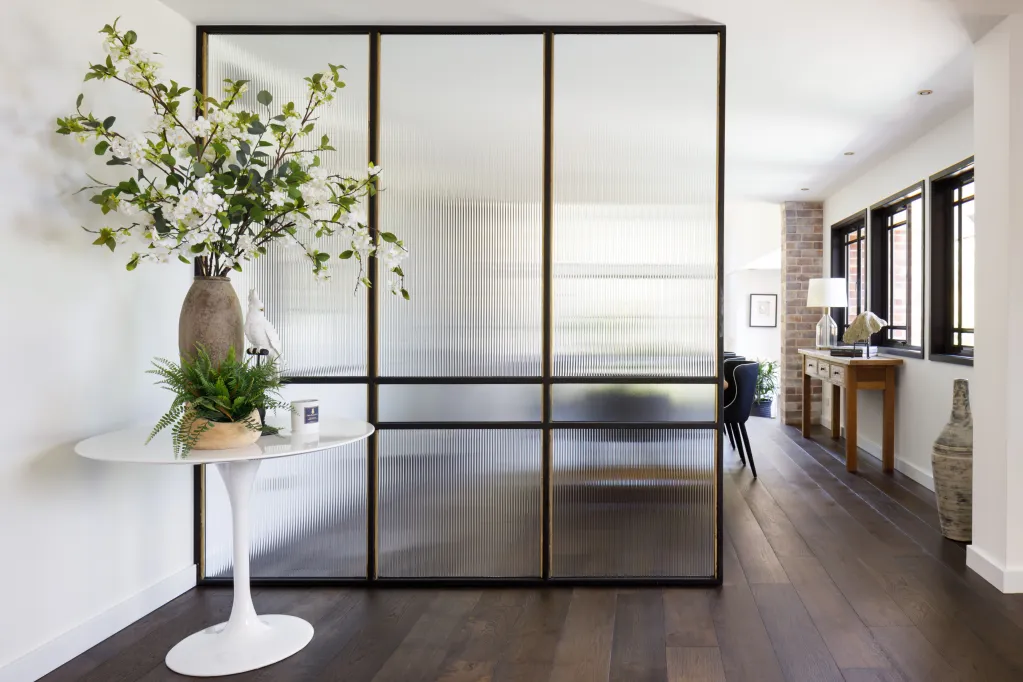In the ever-evolving world of interior design, the quest for a balance between aesthetics and functionality is a recurring theme. One material that consistently garners attention for its unique ability to blend both is reeded glass. With its ribbed texture and semi-obscured views, reeded glass has become a popular choice for homeowners and designers looking to introduce a subtle layer of privacy while adding a sophisticated design element to their spaces.
The Origins and Appeal of Reeded Glass
Reeded glass, sometimes referred to as fluted or ribbed glass, is characterised by its linear, textured surface. This distinctive glass type has its origins in the early 20th century, where it was initially used in more functional applications such as industrial and commercial settings. However, over the years, designers began to recognise its potential for enhancing residential interiors.
One of the key appeals of reeded glass lies in its ability to obscure vision without completely blocking light. This makes it an excellent choice for areas where privacy is desired but where natural light is still essential, such as bathrooms, entryways, and office partitions. As a result, it has gained popularity not only in homes but also in restaurants, boutiques, and offices, where it serves as a functional yet eye-catching design solution.
Applications of Reeded Glass in Interior Design
The versatility of reeded glass allows it to be effectively used in a wide range of applications. These include:
- Room Dividers: Reeded glass panels can be used as stylish room dividers, offering a sense of separation without the need for solid walls. This is particularly useful in open-plan spaces, providing discrete areas for dining or working.
- Shower Enclosures: In bathrooms, reeded glass shower screens offer both privacy and a modern aesthetic. The textured glass allows light to pass through, creating a bright and airy feel even in smaller spaces.
- Cabinet Doors: When used in kitchen cabinets or wardrobes, reeded glass adds a tactile element that can elevate the overall design, combining visual interest with the practical advantage of concealing contents.
- Windows: For ground floor windows or rooms with close neighbouring buildings, reeded glass provides privacy without sacrificing daylight, maintaining a comfortable, illuminated environment.
Design Benefits of Reeded Glass
Beyond functionality, reeded glass offers significant aesthetic benefits. Its linear design can lend a contemporary touch to interiors, aligning with modern or minimalist design sensibilities. Yet, its subtle texture also complements traditional or rustic styles, adding depth and character to the design.
Furthermore, the play of light on the ribbed surface of reeded glass creates dynamic reflections, enhancing the visual appeal of a space. When paired with other materials such as wood, metal, or stone, it can help to create contrast, further enriching the design narrative of an interior.
Considerations When Using Reeded Glass
While reeded glass offers numerous advantages, there are also some considerations for its use. The degree of privacy it provides can vary depending on the design and thickness of the glass grooves. Therefore, it’s important to select the right product to suit specific privacy needs.
Additionally, reeded glass might require regular cleaning to maintain its appearance, particularly in areas exposed to moisture or cooking oils. Fortunately, most types of reeded glass are easy to clean with standard glass cleaners and a soft cloth.


